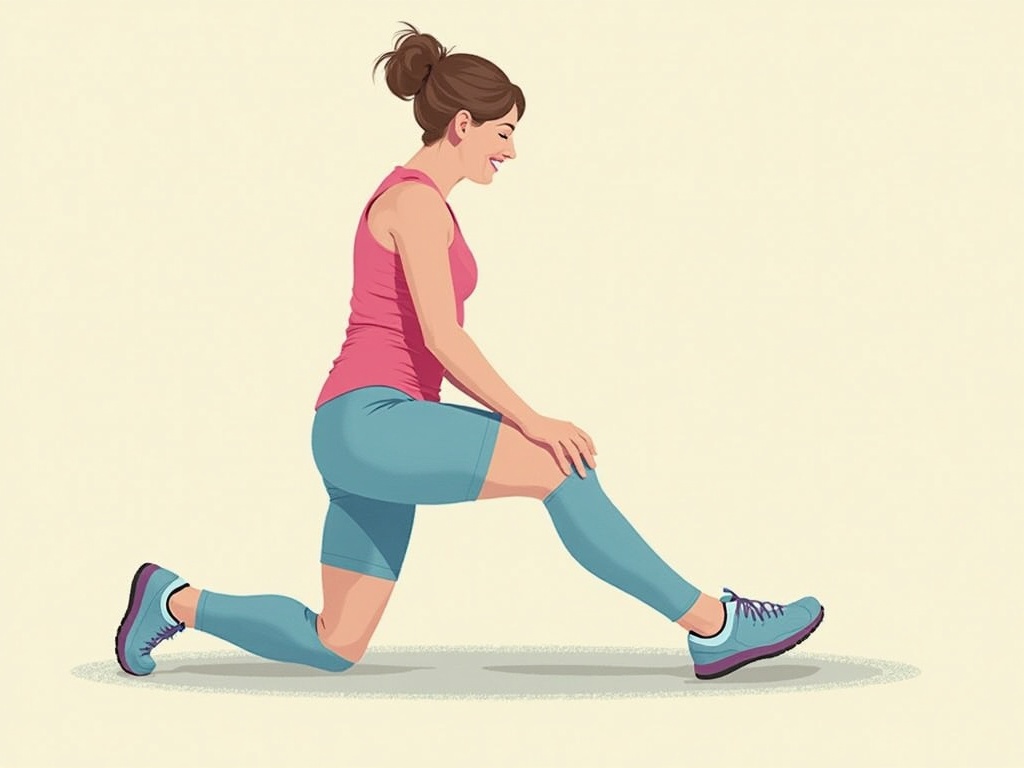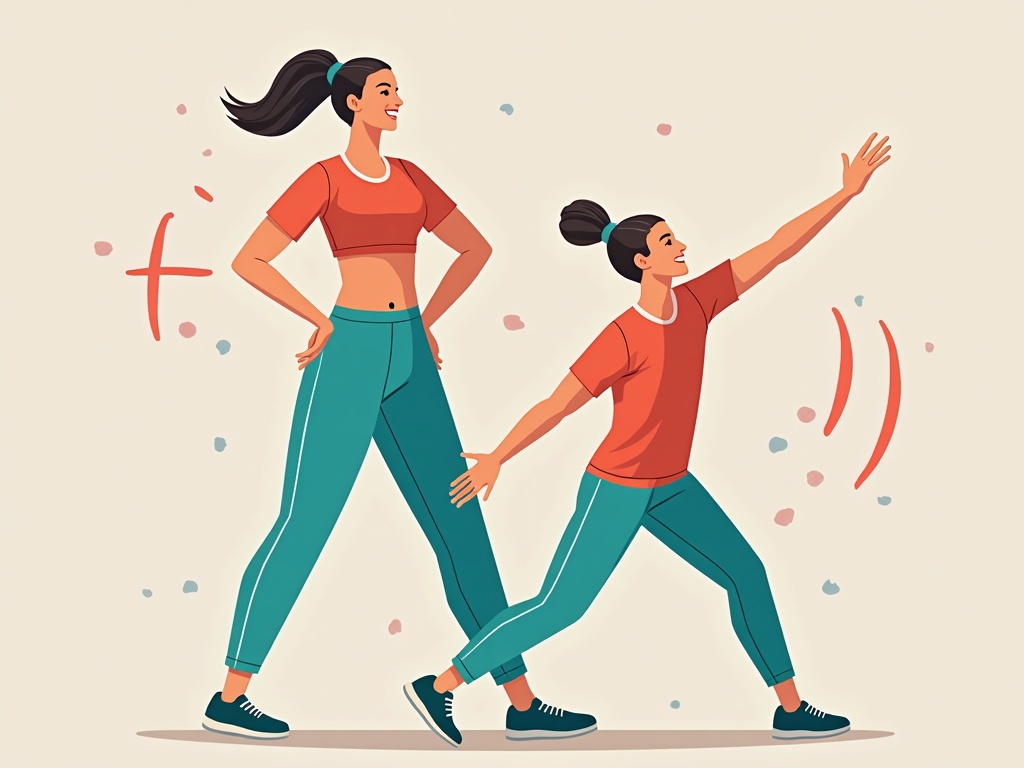Relieve Knee Pain with This Simple Leg Stretching Routine
That nagging ache in your knee – it's a familiar complaint for athletes, weekend warriors, and anyone spending long hours sitting. Before you reach for the pain relievers, consider this: a targeted leg stretching routine might be just what you need. Tight muscles in your legs can put undue stress on your knees, leading to pain and limited mobility. But with the right stretches, you can loosen those muscles, improve joint function, and find lasting relief. Let's dive into a routine designed to alleviate knee pain and keep you moving freely.
Understanding the Knee-Pain Connection
Knee pain isn't always about what's happening *inthe knee itself. Often, it's a symptom of problems elsewhere. Think of your body as a chain: a weakness or tightness in one link affects the others. In this case, tight hamstrings, quadriceps, calves, or even hip flexors can pull on the knee joint, causing misalignment and pain.
Here's a breakdown of how specific muscle groups contribute to knee problems:
- Hamstrings: Tight hamstrings limit knee extension and can alter your gait, increasing stress on the joint.
- Quadriceps: Overdeveloped or tight quads can pull on the patella (kneecap), leading to patellofemoral pain syndrome, a common cause of knee pain.
- Calves: Tight calf muscles restrict ankle mobility, forcing the knee to compensate and absorb more impact.
- Hip Flexors: These muscles, located at the front of your hips, can become shortened from prolonged sitting. Tight hip flexors can tilt your pelvis, affecting your posture and putting strain on your knees.
By addressing these muscular imbalances with a consistent stretching routine, you can alleviate pressure on your knees, improve your range of motion, and reduce pain. Remember to consult with a physical therapist or doctor for advice specific to your condition.
The Ultimate Leg Stretching Routine for Knee Pain Relief
This routine focuses on gently stretching the major muscle groups that impact the knee joint. Remember to listen to your body and stop if you feel any sharp or intense pain. Hold each stretch for 20-30 seconds and repeat 2-3 times on each leg. Consistency is key – aim to perform this routine several times a week for the best results.
- Hamstring Stretch (Seated): Sit on the floor with one leg extended straight out and the other bent with your foot resting against your inner thigh. Reach towards your toes on the extended leg, keeping your back as straight as possible. Feel the stretch in the back of your thigh. If you can't reach your toes, that's perfectly fine; just reach as far as is comfortable.
- Quadriceps Stretch (Standing): Stand tall and hold onto a chair or wall for balance. Grab your ankle and gently pull your heel towards your buttock. Keep your knees together and your thighs aligned. You should feel the stretch in the front of your thigh.
- Calf Stretch (Gastrocnemius): Stand facing a wall, placing your hands on the wall at shoulder height. Step one foot back, keeping your heel on the ground. Lean forward until you feel a stretch in your upper calf.
- Calf Stretch (Soleus): Perform the same stretch as above, but this time, bend your back knee slightly. This targets the soleus muscle, which is located deeper in your calf.
- Hip Flexor Stretch (Kneeling): Kneel on the floor with one knee bent at a 90-degree angle in front of you and the other knee on the ground behind you. Gently push your hips forward until you feel a stretch in the front of your hip and thigh of the leg that's kneeling. Keep your back straight and avoid arching your lower back.
- IT Band Stretch (Standing): Stand with your feet hip-width apart. Cross one leg in front of the other. Reach down towards your toes, allowing your head to hang heavy. You should feel a stretch along the outside of your thigh of the leg that is crossed behind.
Proper Form and Technique: Maximizing Benefits and Minimizing Risk
Stretching might seem simple, but improper form can negate its benefits and even lead to injury. Pay close attention to these key principles:
- Warm-up first: Never stretch cold muscles. Before you begin, do a few minutes of light cardio, such as walking or marching in place, to increase blood flow and prepare your muscles for stretching.
- Breathe deeply: Focus on taking slow, deep breaths throughout each stretch. This helps to relax your muscles and improve flexibility. Exhale as you move into the stretch and inhale as you hold it.
- Avoid bouncing: Bouncing or jerky movements can trigger the stretch reflex, causing your muscles to contract instead of relax. Hold each stretch in a static position.
- Listen to your body: Stretching should feel like a gentle pull, not a sharp pain. If you experience any pain, ease up on the stretch or stop altogether.
- Maintain proper posture: Keep your back straight, your core engaged, and your shoulders relaxed. Good posture ensures that you're targeting the correct muscles and preventing strain on other parts of your body.
Beyond Stretching: Complementary Therapies for Knee Pain
While a leg stretching routine is a great starting point, addressing knee pain often requires a multi-faceted approach. Consider incorporating these complementary therapies into your treatment plan:
- Strengthening Exercises: Strong muscles around the knee joint provide support and stability. Focus on exercises that target the quads, hamstrings, glutes, and calves. Squats, lunges, and leg presses are all excellent choices.
- Low-Impact Cardio: Activities like swimming, cycling, and walking are gentle on the knees and can improve cardiovascular health without putting excessive stress on the joints.
- Weight Management: Excess weight puts extra strain on your knees. Maintaining a healthy weight can significantly reduce knee pain.
- Physical Therapy: A physical therapist can evaluate your specific condition, identify the underlying causes of your knee pain, and develop a personalized treatment plan that includes stretching, strengthening, and other therapeutic modalities. They can also teach you proper body mechanics to prevent future injuries.
- Proper Footwear: Wearing supportive shoes that fit well can help to align your body and reduce stress on your knees. Consider getting fitted for orthotics if you overpronate or have other foot problems.
- Heat and Ice: Applying heat can help to relax tight muscles before stretching, while ice can reduce inflammation after exercise.
Creating a Sustainable Stretching Habit
The key to long-term knee pain relief is consistency. Make stretching a regular part of your daily or weekly routine. Here are some tips for creating a sustainable stretching habit:
- Schedule it in: Just like any other important appointment, schedule your stretching sessions in your calendar.
- Find a stretching buddy: Stretching with a friend can make it more enjoyable and keep you motivated.
- Make it convenient: Choose a time and place that's convenient for you. If you have limited time, break up your stretching routine into shorter sessions throughout the day.
- Listen to your body: Don't push yourself too hard, especially when you're just starting out. Gradually increase the intensity and duration of your stretches as your flexibility improves.
- Celebrate your progress: Acknowledge your achievements, no matter how small. This will help you stay motivated and committed to your stretching routine.
When to Seek Professional Help
While a leg stretching routine can be highly effective for relieving many types of knee pain, it's important to know when to seek professional help. Consult with a doctor or physical therapist if you experience any of the following:
- Severe or persistent pain
- Swelling, redness, or warmth around the knee
- Instability or giving way of the knee
- Inability to bear weight on the leg
- Numbness or tingling in the leg or foot
- Pain that doesn't improve with rest and home treatment
These symptoms could indicate a more serious underlying condition, such as a ligament tear, meniscus injury, or arthritis.
The Road to Pain-Free Movement: It Starts with a Stretch
Don't let knee pain sideline you. By incorporating this simple yet effective leg stretching routine into your life, you can loosen tight muscles, improve joint function, and reclaim your freedom of movement. Remember to listen to your body, practice proper form, and be patient with your progress. Combine stretching with other complementary therapies, and you'll be well on your way to a pain-free and active life. So, roll out your mat, take a deep breath, and start stretching your way to healthier, happier knees!


